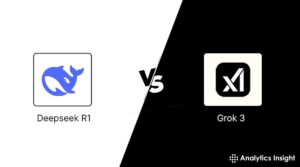xAI Introduces ‘Memory’ Feature to Grok

xAI Enhances Grok with New Memory Feature
Introduction to Grok
Grok, a conversational AI developed by xAI, has recently introduced a significant update: the incorporation of a memory feature. This innovation aims to enhance user interactions by allowing the AI to remember context and details from previous conversations. This article explores the benefits and implications of this new capability, along with insights into its functionality.
What is Grok?
Grok is an advanced AI chatbot designed to engage users in natural conversations. Founded by Elon Musk, xAI develops AI technologies intended to deepen understanding of the universe while prioritizing user experience. Grok’s design mirrors human conversation patterns, making interactions feel more organic.
The Significance of the Memory Feature
The newly added memory feature is pivotal for creating a more personalized user experience. Here’s how it transforms interactions:
1. Understanding Context
With memory, Grok can remember the context of past dialogues. This means that users don’t need to repeat themselves. For instance, if a user discusses their preferences, Grok can recall this in future conversations, making exchanges smoother and more relevant.
2. Enhanced Personalization
Memory allows Grok to tailor responses based on previous interactions. This personalization can lead to better recommendations, more engaging conversations, and a stronger connection between the user and the AI.
3. Improved Learning Capabilities
As users interact with Grok, the AI continuously learns from these conversations. The memory feature enhances its ability to adapt to individual user needs over time, improving its accuracy and effectiveness.
How Does the Memory Feature Work?
Understanding the mechanics of Grok’s memory feature involves recognizing a few core elements:
1. Data Storage
Grok securely stores information shared by users, such as preferences, interests, and past queries. This stored data is crucial for context retrieval in future chats.
2. User Control
To ensure privacy and control, users have the option to manage their data. They can view stored memories, choose to delete specific entries, or even clear all memories if desired. This user-centric approach helps maintain trust in the AI.
3. Contextual Dialogue Management
The AI leverages its memory during conversations to better understand and respond to queries. For instance, if a user asks Grok about their favorite movie from a previous chat, the AI can pull that information swiftly, resulting in a more fluid dialogue.
Benefits of the Memory Feature
The introduction of memory in Grok brings several benefits that enhance user interaction:
- Reduced Repetition: Users can avoid repeating themselves, making conversations less tedious.
- Increased Engagement: Personalized responses foster deeper interactions, encouraging prolonged use of the chatbot.
- Enhanced Satisfaction: A more tailored experience leads to higher user satisfaction and loyalty.
Potential Challenges
While the memory feature offers numerous advantages, there are potential challenges to be aware of:
1. Data Privacy Concerns
As with any AI that stores user data, there are inherent privacy issues. Users may be wary of how their information is stored and used.
2. Misunderstandings
Sometimes, the AI might misinterpret stored information, leading to irrelevant responses that can confuse users.
Conclusion
The memory feature in Grok represents a substantial leap in conversational AI technology, offering a more engaging and personalized experience for users. By building on past interactions, Grok can create a more meaningful dialogue, transforming how individuals engage with AI systems. As the technology evolves, it will be interesting to see how users adapt to these changes and how companies address privacy concerns while maximizing user satisfaction.






